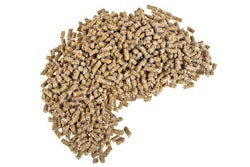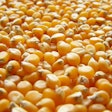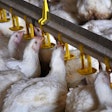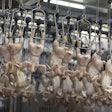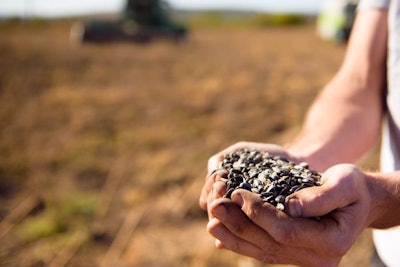
Terre Inovia, a French research institute dedicated to oil and protein grains, seeks to use new technologies to improve the protein content of rapeseed meals and further enhance HiPro sunflower meal.
France and, more generally the European Union, aim to improve their protein autonomy; however, soybean production is not sufficient to satisfy the nutritional needs of the most demanding livestock, i.e. poultry or dairy cows.
Alternatives to soybean meal are increasingly being utilized in feed formulations, but their protein content can vary. The protein concentration of soybean meal, for example, ranks between 44% to 48%, making it more reliable than other industrial meals, e.g. rapeseed meal offer 33% protein content and sunflower high-protein (HiPro) meal can reach up to 36% protein.
According to Patrick Carré, technical researcher at French institute Terres Inovia, new technology can allow rapeseed meal to achieve 42% protein and 46% for sunflower meal.
Increasing protein content
To fully satisfy high-protein concentration formulas, producers need raw materials with high protein content, ranging from a minimum of 40% to 46%. This qualitative leap for rapeseed and sunflower meals will be sufficient to make them great raw materials, as it had been shown by the Prospective Aliments Model of Cereopa, a French agricultural economical center, during the VOCALIM research project several years ago.
“This study simulates the effect on the French market of 450,000 dehulled rapeseed meals (39.5%), 100,000 tons of protein-enriched rapeseed meal (38% protein) and 200,000 tons of sifted sunflower meal (43% proteins),” explains Patrick Carré, technical researcher in French institute Terres Inovia.
Cereopa’s model showed that dehulled rapeseed meal is best suited for the poultry sector.
In this hypothetical “new” market, poultry would capture 74% of the supply, while sifted sunflower meal would find its way in the swine sector, depending, of course, on their price. In any case, this study insisted on the control of residual oil content of the hull.
“As a reminder, let us recall that rapeseed hull, unlike sunflower hull or soybean hull, contains around 8% oil,” Carré add.
He calculated that to achieve a maximum of 12% oil in rapeseed hulls, kernel residues must be lower than 7% of the mass of industrial hulls.
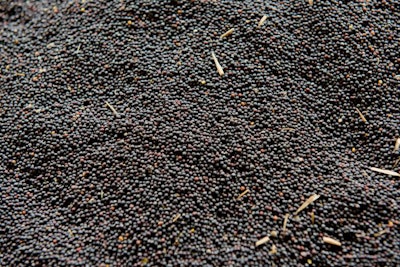 leonik | BigStock.com
leonik | BigStock.comFirst step: dehull seeds
The first step in achieving a higher protein concentration is to dehull sunflower or rapeseed seeds. Dehulling may be done either before crushing (known as head-end or front-end dehulling) or after (tail-end dehulling).
Rapeseed head-end dehulling is difficult.
“The loss of fats in the hull is one of the main obstacles limiting the industrial implementation of rapeseed dehulling,” Carré says. “The main reason resides in the shape of rapeseed outer cotyledons, which resemble the the hull’s shape and make it difficult to separate.”
Thus, he developed a new method for rapeseed hull purification.
“After primary separation by aspiration, the mixture of hulls and kernels is passed between a pair of flat rolls where kernels are flattened and stick to the metal while the hulls do not,” says Carre.
He and his team exploited this property to adapt a small laboratory flaker with two counter-rotating cylinders of 65-mm diameter with scrapers that make kernels fall away from the hulls. The best performances gave hulls and kernel purity up to 96% and 94% respectively.
“This preliminary work has allowed us to prove the concept,” Carre adds. “The next step will be to develop a pilot plant to validate the process efficiency on a larger scale.”
For this purpose, milling roller equipment used for cereals milling would be used. The team will modify it so that the two rollers will have the same rotation speed, equipped with scrapers. The richness of lignin of the pellicles could make them an interesting raw material for the production of biomaterials.
Sunflower slightly easier to manage
Generally used first of all for its oil, sunflower seed is processed for food applications. The meal produced from the crushing is considered a good protein for animals, but also more and more for food, i.e. sunflower flour may be a substitute of wheat flour up to 50% on biscuits or of corn flour up to 20% in extruded breakfast cereals or in corn granola bars.
The top 5 sunflower producing countries, according to the Food and Agriculture Organization of the United Nations (FAO), are Ukraine, Russia, Argentina, Romania and China. And “Hi-Pro sunflower meal,” reaching 36% concentration, is finding its place in EU feed formulations; however, researchers proved that higher protein content may be possible.
For feed, as for food, enhancing protein content and reducing the mostly insoluble fiber to avoid digestibility problems are two aims for sunflower oils and meals producers.
Fully dehulled and defatted meal might seem ideal, but some technical limits emerged. For example, to be efficient in sunflower oil extraction, crushing must be conducted with a minimum of 15% hulls.
Hulls reach up to 30% of sunflower seed weight. To use a high volume of hulls, energy is the best solution, either on the crushing plant or off-site.
“Sieving is known to be a simple but effective way of increasing oilseed protein content since small particles tend to have a higher protein content. Particles with high fiber content are normally lighter and may have a more elongated shape when compared with particles with low fibers,” explains Marcello Murru, from Cargill European Food Innovation Center in Vilvoorde, Belgium, in his article, “Sunflower protein enrichment” (OCL, 2020).
He used a combination of milling (with a hammer mill or a disc mill) and sieving as the first step of protein enrichment process applied on raw sunflower meal and preparation for a gravity separation on a gravity table.
“The fractionation of sunflower meal carried out with a combination of milling, sieving and gravity tables can achieve a protein content close to that of low-protein soybean meal,” concludes Murru.
Protein content around 43% (and around 27% for the byproduct) would find a potential use if this method were due to go to commercial application.
Rapeseed-soybean-sunflower-meal-composition
This table displays Terre Inovia’s composition data for raw soybeans, sunflower seeds and rapeseeds and their meals. (Terre Inovia)


